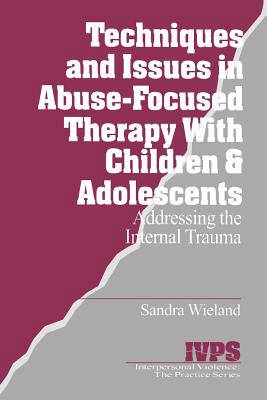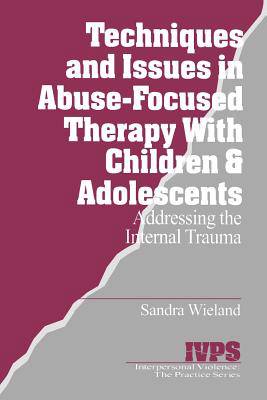
- Afhalen na 1 uur in een winkel met voorraad
- Gratis thuislevering in België vanaf € 30
- Ruim aanbod met 7 miljoen producten
- Afhalen na 1 uur in een winkel met voorraad
- Gratis thuislevering in België vanaf € 30
- Ruim aanbod met 7 miljoen producten
Zoeken
Techniques and Issues in Abuse-Focused Therapy with Children & Adolescents
Addressing the Internal Trauma
Sandra Wieland, Stacy Wieland
€ 216,95
+ 433 punten
Uitvoering
Omschrijving
How can therapists deal effectively with children or adolescents who have been sexually abused but refuse to discuss their experiences? Working with children and adolescents who have been sexually abused presents innumerable challenges for the therapist. Not least among them is the reluctance of some children or adolescents to discuss the abuse. In Techniques and Issues in Abuse-Focused Therapy, author Sandra Wieland describes The Internalization Model, which provides a framework to assist the therapist in understanding the effects of sexual abuse on the child or adolescentÆs internal sense of self and world even when a child or adolescent will not talk about their sexual abuse. Methods of addressing and shifting these abuse-related internalizations within the therapy are described along with techniques such as imaging, genograms, and time-lines. Sexuality, a topic that has been overlooked in the extant research literature on sexually abused children and adolescents, is also explored. This book provides practitioners with ideas for responding to a child or adolescent who becomes sexual within a session and for helping the victim reconnect to his or her own healthy sexuality. Dissociation, ranging from occasional ôoff-in-a-dazeö to dissociated identities, is explored along with extensive therapeutic intervention options. Resistance by the child, by the parent, and by the therapist is also identified and discussed. The techniques and issues in this book are described clearly and succinctly. Case examples are used throughout the book to help therapists incorporate concepts in their own practice. In a final chapter, adolescents discuss their own experiences with therapy. Although Techniques and Issues in Abuse-Focused Therapy centers on children and adolescents, it remains relevant for therapists working with adults who experienced abuse children. This book provides new ideas for advanced practitioners as well as beginning therapists.
Specificaties
Betrokkenen
- Auteur(s):
- Uitgeverij:
Inhoud
- Aantal bladzijden:
- 256
- Taal:
- Engels
- Reeks:
- Reeksnummer:
- nr. 21
Eigenschappen
- Productcode (EAN):
- 9780761904823
- Verschijningsdatum:
- 1/09/1998
- Uitvoering:
- Paperback
- Formaat:
- Trade paperback (VS)
- Afmetingen:
- 157 mm x 229 mm
- Gewicht:
- 412 g

Alleen bij Standaard Boekhandel
+ 433 punten op je klantenkaart van Standaard Boekhandel
Beoordelingen
We publiceren alleen reviews die voldoen aan de voorwaarden voor reviews. Bekijk onze voorwaarden voor reviews.











